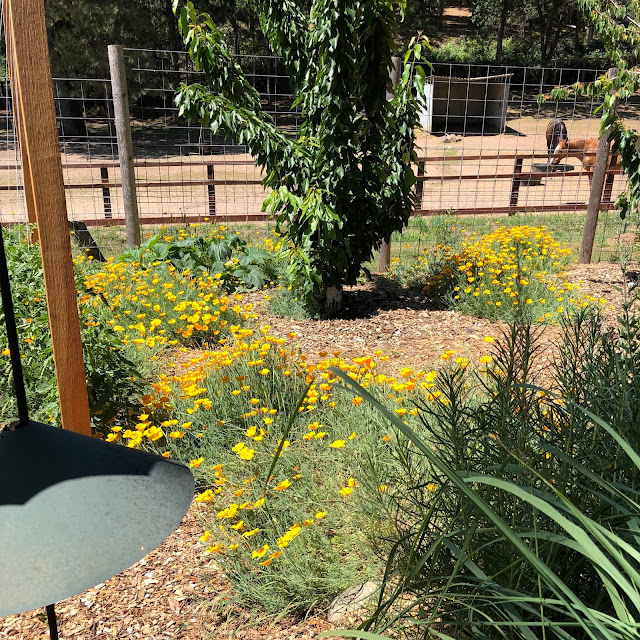On the Ranier, I cut off most of the limbs two years ago but left one that was only slightly infected. The new limbs on that tree are covered in big, juicy, sweet cherries. The diseased limbs have small leaves and small, sour cherries. There are a lot of cherries on this tree; enough for all of us to share. I’m hoping the birds and raccoons will eat the small, sour ones and leave me the big, sweet ones.
A third cherry tree had its first, small crop this year. It is a Utah Giant which has cherries which look and taste similar to Ranier but are larger (hence the name) and I think have a nicer, more complex flavor than the Ranier. My last two cherry trees are just a few years old so no cherries yet.
The cherries are particularly loved by Bullock’s orioles but I see other birds snacking in there as well. I’ve been finding random cherries on the ground in the pasture so I’m not sure if birds are dropping them or other critters are doing so. Yesterday, the bird bath was full of cherry pits.
 |
| I cleaned out the bird bath before taking this photo. It was disgusting. |
I thought, what the heck? Then I remembered that raccoons like to wash their food and figured that explained the pits and the toppled plants near the bird bath. Sure enough, later I found raccoon scat under a pear tree — and it was full of cherry pits.
All the hard work I did earlier this year in the orchard seems to be paying off. The trees all look healthy (except for the one diseased cherry limb which I will remove once the cherries are gone) and are loaded with fruit. I didn’t fertilize them at all this year with anything other than a nice layer of composted horse manure under their mulch of wood chips.



Nice. We have a couple apple trees but they are only giving us small apples. I need to figure out if something is wrong or if they just need to age.
ReplyDeleteApple and pear trees take many years to come into their own. You will get a few small apples at first and then at about 5 years you get more. I think an apple tree is up to its full potential in about 8 years. When we left Aspen Meadows my apple trees were consistently giving me large numbers of large apples — and we were there eleven years so the trees were around ten years old.
Delete